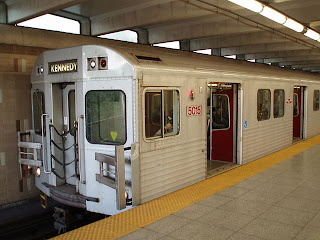 |
| Cat heaven: upcycling a shoebox into a cat bed. |
This post was a spur-of-the-moment thing, so instead of images of products that I don't have time to ask permission to use, you get to look at my gorgeous cats. Milly is a six-year-old calico, and Donut is a four year-old tortoiseshell. My partner and I adopted them three years ago from a foster home where they were growing up together, waiting for awesome parents like us to take them home! :)
Donut and Milly may not be human, but they're as close as I'll ever get to having kids, so believe me when I tell you that I often put their needs before my own. It should come as no surprise then that I'm happy to drop lots of money (relatively speaking) on a less wasteful, less toxic cat tree, even if it means I won't be able to buy much needed furniture for myself in the near future. But where are these elusive eco-friendly products? A quick online search yields links to websites that make me feel like I've gotten lost in a warehouse, featuring a few green items scattered here and there among the traditional options that are made of unsustainably harvested wood, covered in toxic carpeting and glues, likely to be tossed long before they're worn out, and just plain ugly.
Enter moderncat, a blog "for cat owners with a modern style" with lots of content in their green design category. That's how I found out about DKcat: design-conscious handcrafted pet accessories made by Danielle Kilmer Warren in the San Francisco Bay Area. Danielle has a background in interior design and sustainability, so she tends to use materials that are natural and durable. Check out this 26" tower with two perches and a scratching post; it's made with formaldehyde-free bamboo, reclaimed wood, and replaceable recycled carpet tiles. All of Danielle's products can be requested in different colours and sizes.
 |
| Donut sprawled on the footstool... I mean cat bed. |
Then I read about Mountain Cat Trees: unique, handcrafted cat perches and scratching posts made with real trees with the bark removed. What a unique and brilliant idea, to make cat trees out of real trees! Massachusetts-based Rebecca Mountain began crafting her first cat trees nearly a decade ago when she realized that the traditional carpeted ones only encouraged her cats to scratch every other carpeted item in her home - so true! Take a look at this 58" three-level tower with scratching post; it looks so much sturdier and more durable than anything I've seen in a big-box pet store.
Next I discovered purr post. This Portland (Oregon) company designs elegant cat furniture that builds sustainability into every detail: from renewable materials like wool and bamboo to 100% post-consumer recycled paperboard to food-grade adhesives that emit zero VOCs and are LEED certified! They offer a 24" post with a wool-covered base and perch that would not look out of place as a bedside table! Bonus: a portion of every sale goes to supporting local and national animal shelters and rescue groups, and you get a sample of organic catnip with your new cat furniture!
Last but certainly not least, I came across another Portland designer: Square Cat Habitat's line of products keep the environment in mind while incorporating modern decor trends. FSC-certified bamboo and 100% post-industrial recycled fibreboard, along with removable/replaceable inserts, help to reduce the ecological footprint of these items. The 3' Acacia tree features two branches and a treetop (almost more napping options than a cat needs, really), but my favourite product is the Buddha wall perch: the perfect place to escape from the world and into the land of dreaming about birds and mice!
 |
| Milly looking very photogenic on the balcony at our old place. |
Now the hard part: making a decision. Each of these companies offers unique and beautiful cat furniture. Do I support Danielle and her awesome one-woman business? Or should I buy from the company that is closest to me geographically to cut down my shipping-related footprint? Choosing between the two Portland businesses is no easier: one covers its perches with wool (instead of counting sheep when I can't sleep, I picture my cats lounging on the woolly backs of sheep) and the other uses removable/replaceable inserts that speak to the waste reductionist in me.
Help me out: which product would you buy?
























